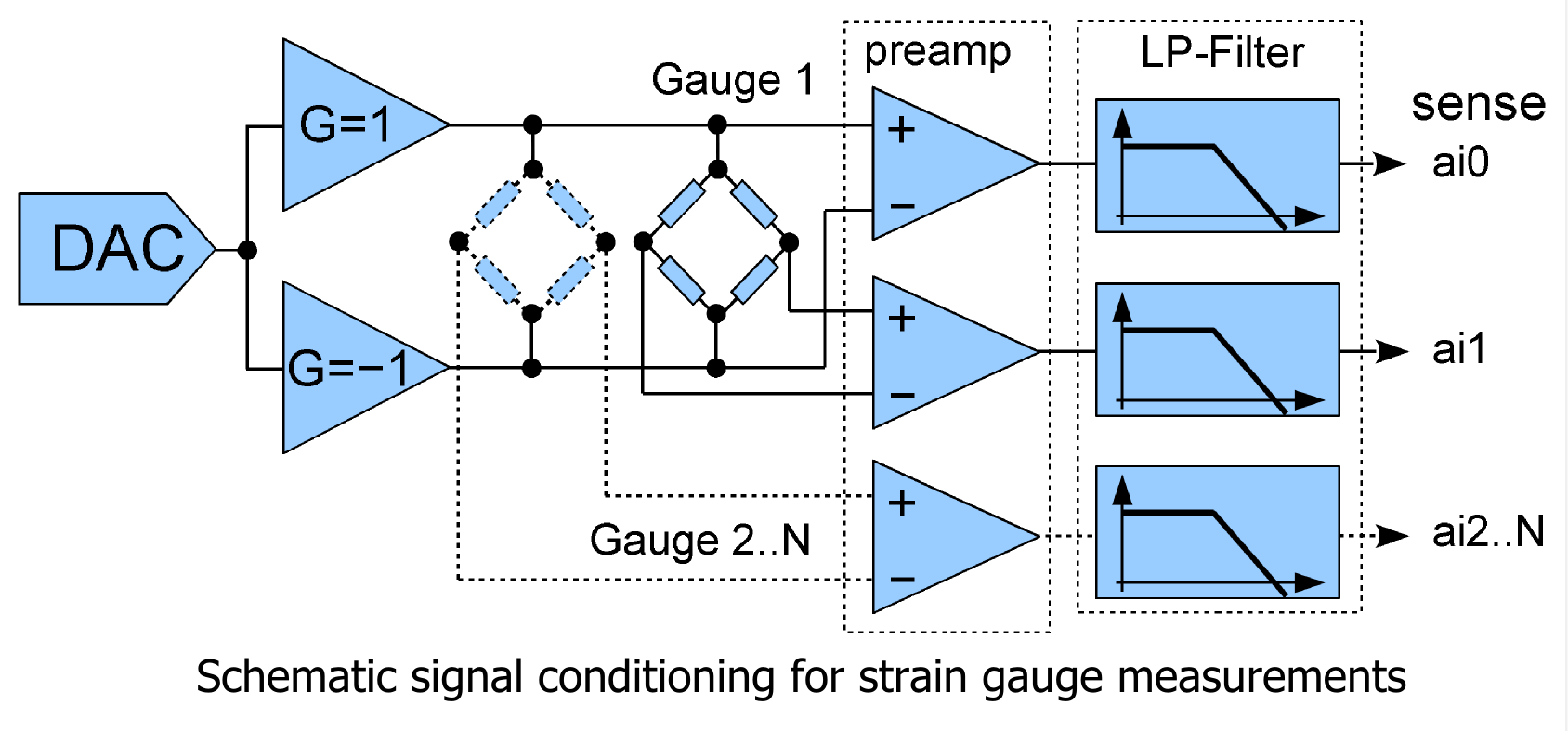Hardware and software bundles for high performance measurements of various sensors
We propose different kinds of optimised signal conditioning interfaces boxed with a USB DAQmx acquisition device, bundled together with our mcDLA multi-channel Digital Lock-in Analyser LabVIEW Add-On to perform outstanding and affordable measurements.
Suitable for Resistance Temperature Detectors (RTD: Pt100, thermistors, Ge resistors, ...), strain gauges, LVDTs, and all other ratiometric sensors and systems (with output signal proportional to an input excitation).
Resolution @ 10 Hz BW |
Uncalibrated accuracy |
|
thermistor |
0.0001 °C (see figure) |
0.002 °C |
force/strain |
20 ppm of sensor full scale |
50 ppm of sensor full scale |
resistance |
3 ppm of full scale |
50 ppm of full scale |
For many measurements, imperfections of the electronics are often overlooked. Ratiometric AC measurements are so accurate by design that in most cases the limiting factor is sensor accuracy itself.
Available with large choice of format, channel count, connectivity
Most systems use 4-wire sensors, but we can also provide 6-wire sensor connectivity to compensate for voltage drop in wires for even better accuracy.
For resistance measurements (including RTDs) the bipolar current excitation can be either provided by a separate current source for each channel, allowing for the independent connection of sensors, or produced by a single source feeding all sensors in series. The latter option leads to a significant decrease in wire numbers, while still having 4-wire like performance. This can be especially useful in cases where connectivity is a major constraint, like for feedthrough in vacuum chambers.
Examples of existing designs

strain gauge measurement system with ten 4-wire inputs (J1 to J10) and two 6-wire inputs (A and B).
 Compact, USB self-powered box for strain gauge and force measurements : the cheapest solution with the benefits of AC measurements
Compact, USB self-powered box for strain gauge and force measurements : the cheapest solution with the benefits of AC measurements

Modular chassis for sensitive resistance measurements with up to 64 channels
Used for Pt-100 temperature readings, or as a powerful micro-ohmmeter for contacts
In contrast to solutions with a multimeter and scanner, this system is able to provide incomparably faster data rates at equivalent resolution
Measurement principle
- An AC signal at a frequency Fref is generated to excite the sensor
- The response of each sensor is amplified, filtered and acquired
- A synchronous detection (lock-in analysis) is performed between Fref and the sensor signals
- The excitation itself is also low-pass filtered and acquired. This allows to compensate for the Digital to Analog and Analog to Digital converters' imperfections as well as for the influence of the filter transfer function by determining the true ratiometric response

High degree of design optimisation
- Per channel antialiasing Low-Pass Filter matched to the acquisition device
- Very low noise fixed gain preamplifiers as a standard. On request, the input stage can be further improved with ultra-low noise components, or matched to the signal source impedance
- Symmetric bipolar voltage excitation to reduce the common mode seen by preamplifiers

